Some may argue that Vienna’s Art Nouveau movement was just another passing artistic trend, but delving into its intricate details and societal impact reveals a much richer narrative.
The fusion of organic forms, meticulous craftsmanship, and bold creativity in Vienna’s Art Nouveau scene created a profound influence that transcended mere aesthetics.
As one explores the architectural wonders and artistic innovations of this era, a deeper appreciation for Vienna’s role in shaping modern design emerges.
But what truly sets Vienna’s Art Nouveau apart is its ability to captivate the imagination and inspire a reevaluation of artistic boundaries, making it a topic worth exploring further.
Key Points
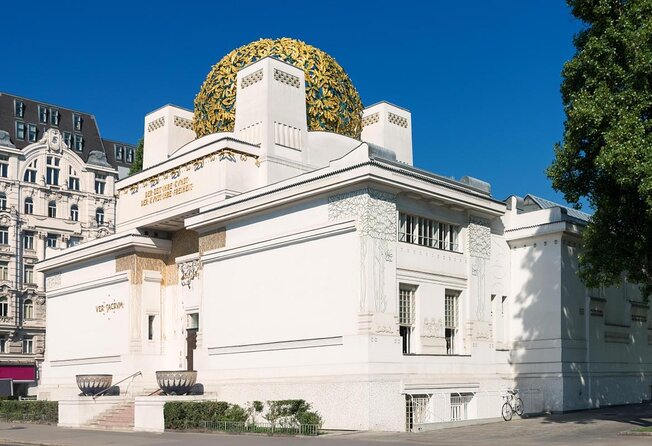
- Vienna’s pivotal role in the Art Nouveau movement with iconic figures like Klimt and Wagner driving innovation.
- Architectural masterpieces like the Secession Building and Kirche am Steinhof showcase Vienna’s rebellious creativity.
- Decorative arts by Klimt, Hoffmann, and Moser reflect the fusion of creativity and functionality in Art Nouveau.
- Vienna’s Art Nouveau legacy influences global aesthetics, with ongoing preservation efforts and educational programs dedicated to its history.
Art Nouveau Movement in Vienna
Vienna played a pivotal role in the vibrant and influential Art Nouveau movement of the late 19th and early 20th centuries. At the heart of Vienna’s art scene was Secessionist architecture, characterized by its innovative and ornate designs. This style rebelled against the constraints of academic tradition, embracing asymmetry, intricate ornamentation, and organic motifs inspired by nature.
The Secessionist movement, led by artists like Gustav Klimt and architects such as Otto Wagner, sought to break away from the past and create a new aesthetic language. Vienna became a hub for creativity and ingenuity, with Secessionist architecture shaping the city’s skyline and influencing artistic movements far beyond its borders.
You can also read our reviews of more tours and experiences in Vienna.
Architectural Masterpieces

Among the architectural masterpieces that define the Art Nouveau movement in Vienna are the Majolica House, the Secession Building, Kirche am Steinhof, the Post Office Savings Bank, and the Wagner Villa.
These buildings showcase the intricate Secessionist style, characterized by Jugendstil influences and a departure from traditional architectural norms. The Secession Building, designed by Joseph Maria Olbrich, stands out with its distinctive golden dome and ornate facade.
Kirche am Steinhof, a church designed by Otto Wagner, exhibits his innovative approach to architecture, combining functionality with artistic flair. The Post Office Savings Bank, another Wagner creation, features geometric patterns and decorative elements typical of the Jugendstil movement.
Lastly, the Wagner Villa epitomizes the Art Nouveau style with its elegant curves and modern aesthetic.
Decorative Arts and Designers
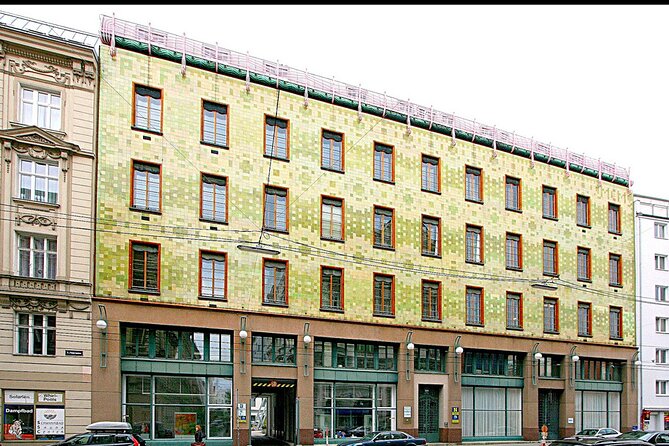
Decorative arts and designers of the Art Nouveau movement in Vienna epitomize the fusion of artistic creativity and functional design, showcasing the era’s emphasis on intricate craftsmanship and innovative aesthetics.
Gustav Klimt’s influence can be seen in the rich and symbolic elements of the movement, while Josef Hoffmann‘s legacy is evident in the geometric and minimalist designs he created.
Otto Wagner’s furniture pieces are celebrated for their elegant curves and practicality, reflecting the movement’s focus on blending art with everyday objects.
Koloman Moser’s glassware stands out for its intricate patterns and vibrant colors, embodying the Art Nouveau style’s emphasis on natural forms and meticulous detailing.
Together, these artists and designers contributed significantly to the unique and influential aesthetics of Art Nouveau in Vienna.
Societal Impact of Art Nouveau
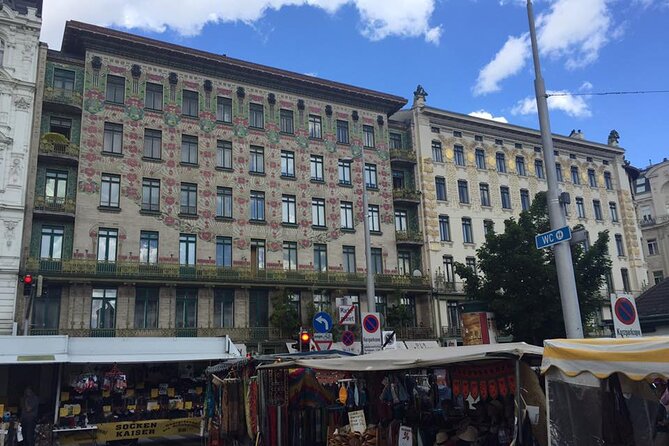
The societal impact of Art Nouveau resonates through its emphasis on craftsmanship, shifting artistic expressions and aesthetics, influencing fashion trends, integrating art into everyday life, and imbuing symbolism and allegory into its art forms.
- Craftsmanship emphasis
- Shift in artistic expression and aesthetics
- Influence on fashion trends
- Integration of art into everyday life
- Symbolism and allegory in Art Nouveau art
Art Nouveau’s focus on craftsmanship elevated the status of artisans and their work, leading to a reevaluation of traditional skills. The movement’s innovative designs and artistic freedom sparked a revolution in aesthetics, inspiring new ways of artistic expression.
Fashion trends seamlessly integrated Art Nouveau motifs, bringing art into the fabric of everyday life. Symbolism and allegory added depth and meaning to the art forms, creating a rich tapestry of visual storytelling.
Legacy and Influence
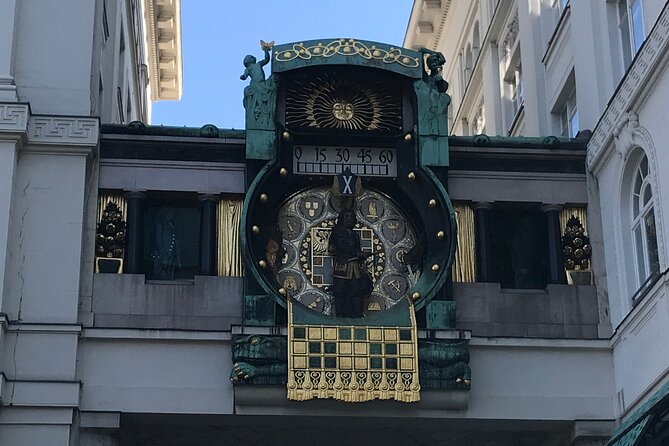
Art Nouveau’s enduring legacy continues to shape modern design with its timeless influence and artistic innovations. The movement’s emphasis on organic forms, intricate patterns, and decorative beauty has inspired modern reinterpretations across various artistic disciplines. Educational programs focused on Art Nouveau have proliferated, aiming to enlighten enthusiasts about the movement’s significance and influence on contemporary design trends.
| Legacy Point | Description |
|---|---|
| Preservation Efforts | Ongoing initiatives to conserve Art Nouveau buildings and artworks |
| International Recognition | Acknowledgment of Viennese Art Nouveau on a global scale |
| Revival of Art Nouveau | Renewed interest in incorporating Art Nouveau elements into modern aesthetics |
| Educational Initiatives | Programs and courses dedicated to teaching the history of Art Nouveau |
| Modern Interpretations | Contemporary artists and designers drawing inspiration from Art Nouveau |
Vienna’s Role in Art Nouveau
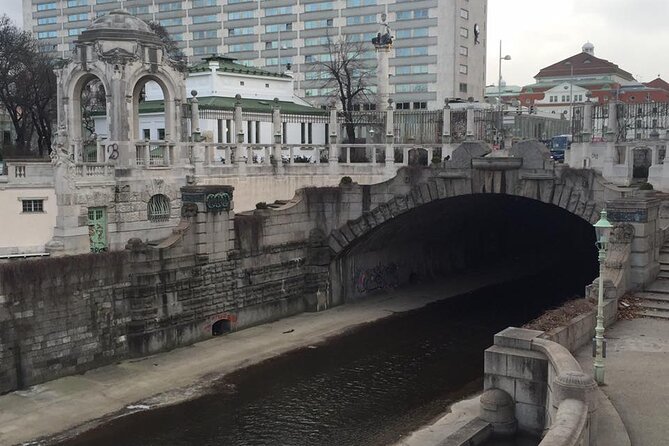
Vienna’s pivotal contribution to the Art Nouveau movement is underscored by its architectural masterpieces and influential artists associated with the era. The city’s artistic influence and cultural significance in Art Nouveau are undeniable, shaping the movement in profound ways.
- Gustav Klimt’s iconic paintings
- Secession Building’s innovative design
- Wiener Werkstätte’s impact on decorative arts
- Otto Wagner’s revolutionary furniture designs
- Koloman Moser’s intricate glassware craftsmanship
Vienna not only provided a fertile ground for artistic experimentation but also fostered a new approach to art, design, and architecture that resonated far beyond its borders. This blend of creativity, craftsmanship, and innovation continues to inspire and influence modern design trends, solidifying Vienna’s enduring legacy in the Art Nouveau movement.
Key Characteristics of Art Nouveau
Indicative of a dynamic and organic aesthetic, Art Nouveau style captivates with its intricate forms and flowing lines. Innovative designs are a hallmark of this artistic movement, characterized by a departure from traditional artistic conventions.
Artists and architects sought inspiration from nature, incorporating organic motifs like flowers, plants, and flowing curves into their creations. This emphasis on natural forms brought a sense of vitality and freshness to the art of the time. The use of asymmetry and a focus on decorative surfaces further distinguish Art Nouveau from preceding styles.
Notable Artists and Architects
Renowned for their innovative contributions to the Art Nouveau movement in Vienna, the notable artists and architects of this era left an indelible mark on the world of design and aesthetics. Among them, Gustav Klimt’s influence in the realm of painting and decorative arts was unparalleled, inspiring many with his unique style and symbolism.
Otto Wagner, known for his groundbreaking architectural designs, reshaped the cityscape with his visionary approach to buildings and urban planning.
- Gustav Klimt’s revolutionary paintings
- Otto Wagner’s pioneering architecture
- Koloman Moser’s exquisite glassware
- Josef Hoffmann’s influential designs
- The Wiener Werkstätte collective’s impact on decorative arts
Common questions
How Did the Political and Social Climate in Vienna During the Late 19th and Early 20th Centuries Influence the Development of the Art Nouveau Movement in the City?
The political influence and social dynamics of late 19th and early 20th century Vienna shaped the Art Nouveau movement by fostering a climate of artistic innovation and cultural evolution. These factors catalyzed a creative renaissance in the city.
What Are Some Lesser-Known Examples of Art Nouveau Architecture in Vienna That Are Not Included in the List of Architectural Masterpieces?
In Vienna, hidden gems of Art Nouveau architecture await exploration and discovery. Beyond the famous landmarks, lesser-known treasures showcase the intricate beauty and innovation of this style, inviting visitors to uncover Vienna’s artistic secrets.
How Did the Wiener Werkstätte Differ From Other Art Nouveau Movements in Europe, and What Unique Contributions Did It Make to the Decorative Arts?
The Wiener Werkstätte distinguished itself in European Art Nouveau by emphasizing craftsmanship and blending art with everyday life. Its unique contributions to decorative arts included innovative designs reflecting Vienna’s influence and shifting social climate.
What Impact Did the Art Nouveau Movement Have on Gender Roles and Representations of Femininity in Viennese Society at the Time?
Influencing gender roles and femininity representation, Art Nouveau in Vienna reflected societal shifts. Embracing intricate designs and symbolic motifs, it challenged traditional norms. The movement intertwined with political and social influences, shaping a new artistic era.
How Has the Global Reception and Interpretation of Viennese Art Nouveau Evolved Over Time, and What Factors Have Contributed to Its Enduring Popularity and Influence in the Contemporary Art World?
Over time, the global reception of Viennese Art Nouveau has evolved, reflecting evolving trends in art appreciation. Its enduring popularity and contemporary influence stem from a harmonious blend of intricate craftsmanship, symbolic depth, and timeless elegance.
Final Words
To sum it up, Vienna’s Art Nouveau movement revolutionized the world of art and design with its intricate patterns, organic forms, and focus on craftsmanship. The city’s iconic architectural masterpieces and talented artists like Gustav Klimt continue to inspire modern design.
The legacy of Art Nouveau in Vienna lives on, leaving a lasting impact on society and shaping the city’s rich artistic heritage. Vienna’s role in the Art Nouveau movement remains a testament to the city’s creative spirit and innovative approach to art.
More Tour Reviews in Vienna
Not for you? Here's more nearby things to do in Vienna we have reviewed
- Highlights of Vienna: Private Bike Tour With Licensed Guide
- Full-Day Private Trip From Vienna to Hallstatt
- Vienna: Guided Walking Tour of City Center Highlights
- Vienna: Skip-The-Line Ticket to the Museum of Technology
- Bicycle Tour – Vienna Complete
- Singing Mozart, in Mozart Costume
- 2-Hour Alpine Private Hiking Tour Along Luckerte Wand Mountain From Vienna
- Trip From Vienna: Visit Bratislava – Transport, Lunch and Guided Tour Included
- Private Transfer From Vienna City to Bratislava City
- Vienna: Walking Tour of the Historic Ringstrasse
- Vienna Self Guided Sherlock Holmes Murder Mystery Game
- Museum Hopping in Vienna
